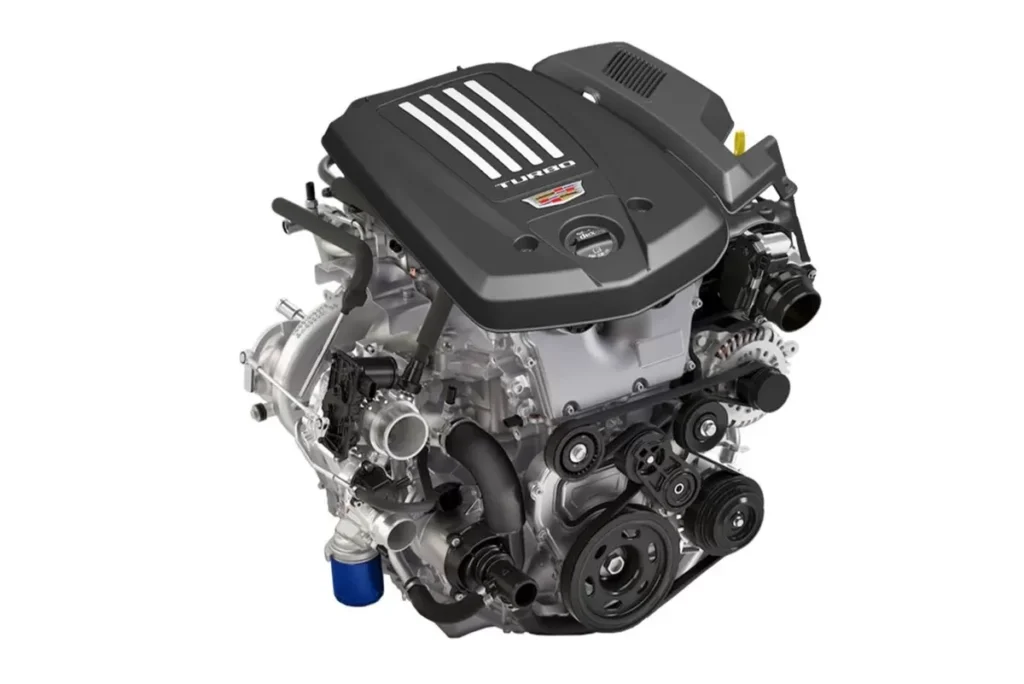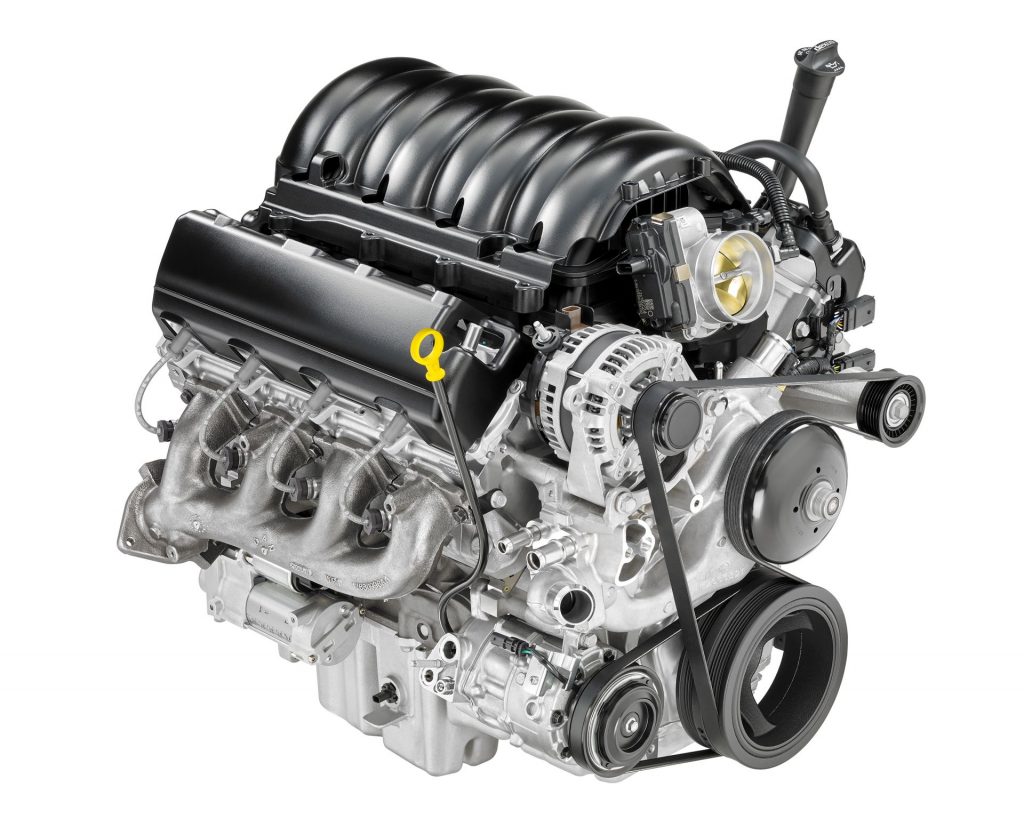The GM L3B 2.7L engine was introduced in 2019 as an optional engine for the Chevrolet Silverado 1500 and the GMC Sierra 1500 pickup trucks. It was designed to provide an efficient yet powerful option for customers who prioritize fuel economy and performance.
The engine features a number of advanced technologies, including direct fuel injection, dual overhead camshafts, and a high-pressure fuel system. These features allow the engine to produce 310 horsepower and 348 lb-ft of torque, while still achieving an EPA-estimated 23 mpg combined fuel economy rating.
The L3B engine has received positive reviews for its smooth power delivery and responsive acceleration. It has also been praised for its quiet operation and overall refinement.
Specifications for the GM L3B 2.7L engine
| Engine Type | Inline 4-Cylinder |
|---|---|
| Displacement | 2.7 liters (166 cubic inches) |
| Bore x Stroke | 3.46 in x 3.62 in |
| Compression Ratio | 11.0:1 |
| Valvetrain | DOHC (Dual Overhead Cam) |
| Fuel Delivery | Direct Injection |
| Horsepower | 310 hp @ 5,600 rpm |
| Torque | 348 lb-ft @ 1,500-4,000 rpm |
| Block Material | Cast Aluminum |
| Cylinder Head Material | Cast Aluminum |
| Firing Order | 1-3-4-2 |
| Engine Weight | Approx. 350 lbs |
| Recommended Fuel | Regular Unleaded |
| Recommended Oil | Dexos1 Gen 2 0W-20 Synthetic |
| Maximum Engine Speed | 6,500 rpm |
| Applications | 2019-Present Chevrolet Silverado 1500, GMC Sierra 1500 |
| Camshaft | Dual Overhead Camshaft |
| Camshaft Duration | 191/190 degrees |
| Camshaft Lift | 0.46″/0.46″ |
| Intake Manifold | Composite |
| Throttle Body | Electronic |
| Ignition System | Coil-on-plug |
| Exhaust System | Single exhaust |
| Fuel Injectors | High-pressure, 2500 bar |
| Oil Capacity | 6 quarts |
| Coolant Capacity | 10.6 quarts |
| Emissions Control | Catalytic converter, positive crankcase ventilation, exhaust gas recirculation, selective catalytic reduction |
| Transmission Compatibility | 8-speed automatic |
| Crankshaft Material | Forged steel |
| Connecting Rod Material | Powdered metal |
| Piston Material | Cast aluminum |
| Valve Diameter | Intake: 37mm, Exhaust: 31.5mm |
| Fuel System Pressure | 2500 bar |
| Redline RPM | 6500 |

Oil specs
The oil specs for the GM L3B 2.7L engine, including its capacity, type, and recommended intervals. Here’s a detailed table:
| Oil Specification | Capacity | Type | Recommended Intervals |
|---|---|---|---|
| GM dexos1 Gen 2 | 6 quarts | Full synthetic 0W-20 | Every 7,500 miles or 12 months |
| AC Delco dexos1 Gen 2 | 6 quarts | Full synthetic 0W-20 | Every 7,500 miles or 12 months |
| Mobil 1 Extended Performance | 6 quarts | Full synthetic 0W-20 | Every 20,000 miles or 12 months |
| Pennzoil Platinum | 6 quarts | Full synthetic 0W-20 | Every 10,000 miles or 12 months |
| Valvoline Advanced Full Synthetic | 6 quarts | Full synthetic 0W-20 | Every 7,500 miles or 12 months |
Please note that these are general recommendations and it’s important to refer to the specific owner’s manual for your vehicle for the most accurate information regarding oil specifications, capacity, and recommended intervals. Additionally, certain driving conditions such as frequent towing or extreme temperatures may require more frequent oil changes.
Fuel consumption
The fuel consumption of the GM L3B 2.7L engine can vary depending on several factors such as vehicle weight, driving conditions, and modifications. However, here are the estimated fuel consumption ratings for different vehicles equipped with the GM L3B 2.7L engine:
- 2019-… Chevrolet Silverado 1500 with 2WD: 20 mpg city, 23 mpg highway, 21 mpg combined
- 2019-… Chevrolet Silverado 1500 with 4WD: 19 mpg city, 22 mpg highway, 20 mpg combined
- 2019-… GMC Sierra 1500 with 2WD: 20 mpg city, 23 mpg highway, 21 mpg combined
- 2019-… GMC Sierra 1500 with 4WD: 19 mpg city, 22 mpg highway, 20 mpg combined
It’s important to note that actual fuel consumption can vary depending on individual driving habits and conditions, and may be affected by factors such as traffic congestion, driving speed, and vehicle maintenance. Regular maintenance, including replacing air and fuel filters, can help ensure optimal fuel efficiency and performance from the GM L3B 2.7L engine.
What cars use the GM L3B 2.7L engine
The GM L3B 2.7L engine is a relatively new engine and is currently being used in a few General Motors vehicles. Here is a list of cars that use the GM L3B 2.7L engine:
| Make | Model | Year Range |
|---|---|---|
| Chevrolet | Silverado 1500 | 2019-Present |
| GMC | Sierra 1500 | 2019-Present |
| Cadillac | CT4 | 2020-Present |
| Cadillac | CT5 | 2020-Present |
The GM L3B engine is a turbocharged, direct-injection engine that produces 310 horsepower and 348 lb-ft of torque. It is mated to an 8-speed automatic transmission and is designed to provide a balance of performance and fuel efficiency. It is also equipped with advanced features such as cylinder deactivation and stop/start technology to further improve fuel economy.
Possible Problems to Look Out for in the 2.7L L3B Engine
The 2.7L L3B engine is a reliable powertrain that powers some of General Motors’ trucks and SUVs. Since its launch in 2019, there have been limited complaints about the engine’s reliability. However, as with any machine, it is not entirely faultless. In this article, we will discuss some of the common problems associated with the 2.7L L3B engine and how to prevent them.
-
Active Fuel Management (AFM) System Failure
The 2.7L engine features an Active Fuel Management (AFM) system designed to improve fuel efficiency. The system operates by shutting down some engine cylinders during light driving conditions and reactivating them when more power is needed. However, drivers have continuously complained about the system’s reliability.
The lifters used in the AFM system are prone to failure, making them susceptible to catastrophic engine failure. Customers have filed a class-action lawsuit against General Motors, alleging that the lifters malfunctioned and failed, leading to significant issues or total engine failure.
To prevent AFM system failure, you can use tuning software like HP Tuners, install an AFM disabler, or opt for Active Fuel Management (AFM) or Displacement on Demand (DOD) delete. Although the latter is the most effective method, it is also the most expensive and labor-intensive.
-
Carbon Buildup
Every direct injection engine suffers from carbon buildup in the intake manifold over time, and the 2.7L L3B engine is no exception. Carbon deposits from blowby gases gradually gather in the intake port and valves, reducing engine performance.
Symptoms of carbon buildup include heavy exhaust fume, reduced fuel efficiency, engine misfire, poor acceleration, rough idle, illuminated check engine light, cold stalling, and power loss, mostly while on high speed.
To prevent carbon buildup, you can use oil with low volatility levels or install an oil catch can in the vacuum line from the PCV valve.
-
Clogged Injectors
Direct injection engines introduce injectors that spray fuel directly into the combustion chamber, allowing for more precise fuel delivery. However, the injectors’ exposure to extreme heat and particulate matter can cause carbon buildup, clogging the injector tips and impeding their performance.
Symptoms of clogged injectors include illuminated check engine light, engine misfire, reduced fuel efficiency, lean fuel mixture, reduced engine performance, crank but no start, and rough idle.
To prevent clogged injectors, you can use fuel additives or opt for injector cleaning before considering replacement.
-
High-Pressure Fuel Pump Failure
Direct-injected engines have a high-pressure fuel pump that pressurizes the fuel before sending it to the injectors. The pump operates under substantial pressure, making it susceptible to failure after extended use.
Symptoms of high-pressure fuel pump failure include reduced fuel efficiency, low fuel pressure, weird idle, power loss, engine surge, delayed start, engine stall, and no start.
To prevent high-pressure fuel pump failure, you should maintain your vehicle’s fuel system regularly and check the condition of the low-pressure pump.
-
Poor Fuel Economy
Despite being marketed for its fuel economy, some drivers have complained about terrible gas mileage associated with the 2.7L L3B engine. The turbocharger’s spool-up and acceleration can lead to poor fuel economy if not regulated.
To prevent poor fuel economy, avoid continually flooring the gas pedal and regulate your driving habits to match the EPA-estimated MPG.

GM L3B 2.7L engine tuning
The information about tuning the GM L3B 2.7L engine and the associated horsepower and costs. Here is a table detailing some of the options:
| Tuning Option | Horsepower Gain | Cost |
|---|---|---|
| Performance Air Intake | 5-10 HP | $200-400 |
| Performance Exhaust System | 10-15 HP | $500-1000 |
| Performance Tuner | 20-50 HP | $400-800 |
| Supercharger Kit | 50-100+ HP | $5,000-10,000 |
| Nitrous Oxide System | 75-200+ HP | $500-2,500 |
Please keep in mind that these are estimates and actual results may vary depending on the specific components used and the condition of the engine. Additionally, adding too much power can potentially cause damage to the engine, so it’s important to approach any modifications with caution and consult with a qualified mechanic or tuner.
Price
The GM L3B 2.7L engine is a turbocharged four-cylinder engine that is commonly used in Chevrolet and GMC trucks. The price of this engine can vary depending on several factors such as the condition, mileage, and location of the engine.
Here’s a table that provides a rough estimate of the prices for a new, used, remanufactured, and the cost of replacement for the GM L3B 2.7L engine:
| Engine Type | Price Range |
|---|---|
| New | $2,500 – $5,000 |
| Used | $1,000 – $2,500 |
| Remanufactured | $2,000 – $3,500 |
| Cost of Replacement | $3,000 – $6,000 |
Please note that these prices are just a rough estimate, and the actual cost may vary depending on various factors, such as the supplier, the condition of the engine, and any additional services or parts that may be required.
If you are interested in purchasing an engine or need more specific pricing information, I would suggest contacting a reputable engine supplier or dealer for accurate pricing information.
0 Comments